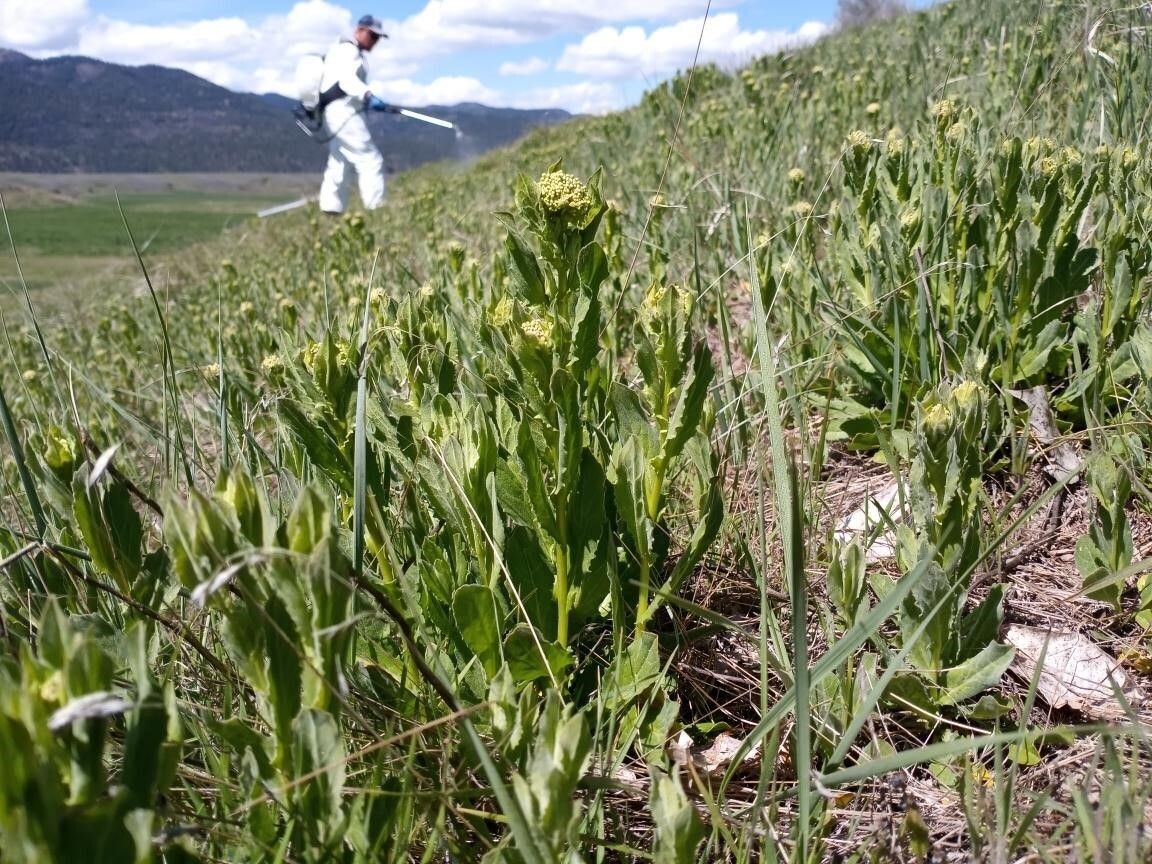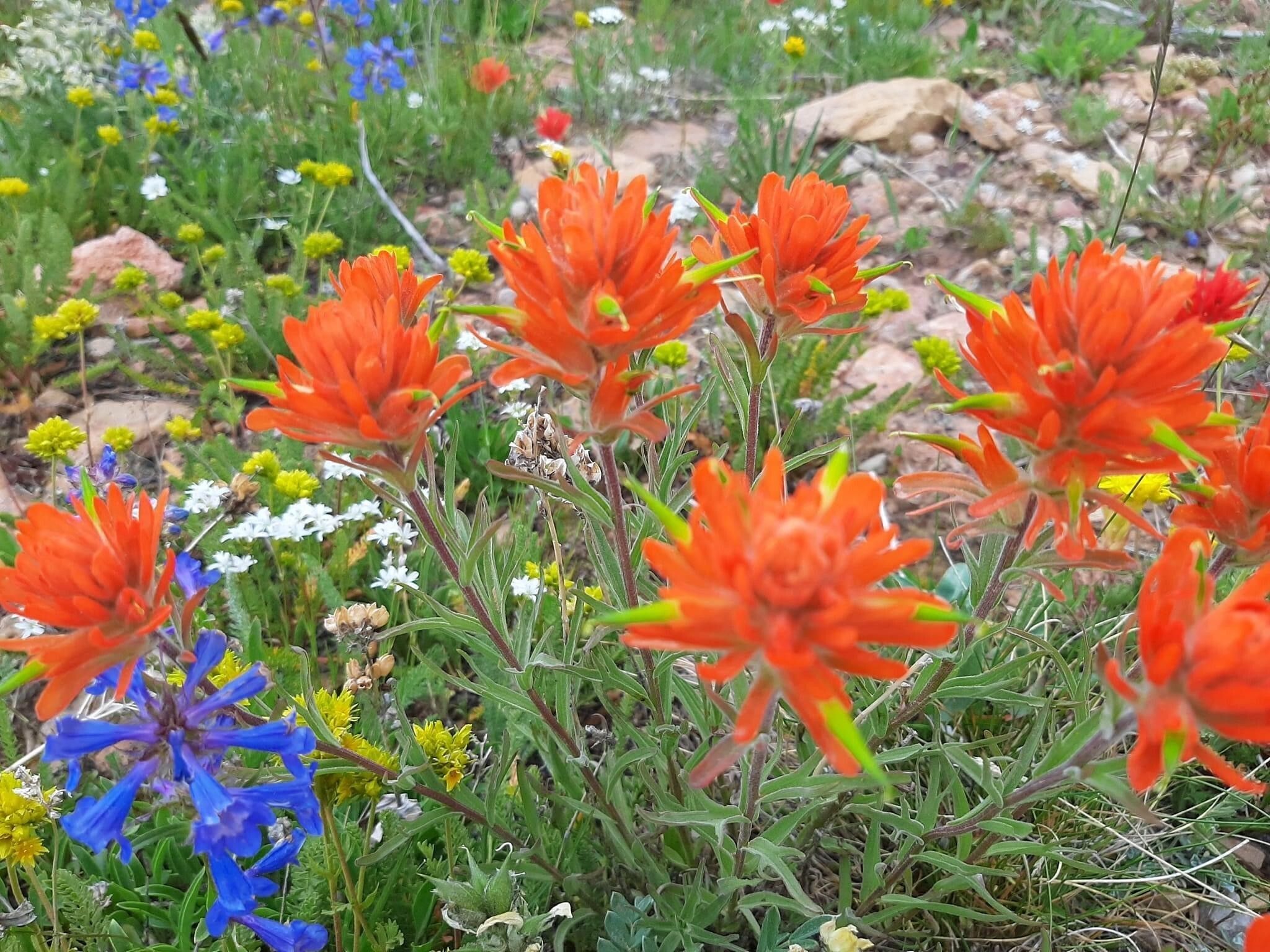
Help stop the spread of this aggressive weed in Missoula County
As spring unfolds across Missoula County, residents may start noticing clusters of small white flowers emerging along roadsides, pastures, and disturbed ground. While they may look harmless at first glance, these blooms could be a sign of Whitetop (Lepidium draba)—an aggressive, fast-spreading invasive plant that threatens native landscapes and agricultural productivity.
What is Whitetop?
Also known as hoary cress, Whitetop is a deep-rooted perennial in the mustard family, originally from Eurasia. It has spread widely across the western United States, thriving in disturbed soils and quickly crowding out native vegetation.
How to Identify It
- Flowers: Small, white, and densely clustered in flat-topped bunches.
- Leaves: Gray-green, arrow- or heart-shaped, and clasping the stem.
- Height: Typically 1 to 2 feet tall.
- Roots: Extensive and deep, capable of regenerating from even small fragments.
Whitetop usually begins blooming in late April through early summer, making spring the ideal time for early detection and control efforts.
Why It Matters
Whitetop is more than a visual nuisance—it’s a serious ecological and economic threat. Once established, it:
- Displaces native plant species and reduces biodiversity.
- Degrades wildlife habitat.
- Competes with valuable forage in pastures and rangelands.
- Is difficult to eradicate due to its persistent root system.
A growing source of Whitetop infestation in Missoula County is uncertified hay and forage imported from outside areas. Seeds and plant fragments can easily hitch a ride in contaminated feed, introducing the plant into previously unaffected pastures and properties.
What You Can Do
- Stay vigilant: Check your property, roadsides, and fence lines for early signs of Whitetop.
- Act quickly: Small infestations can often be controlled by manually removing the entire plant, including its root system, before it goes to seed. Herbicide treatments can also be effective, especially when used early in the growing season.
- Buy certified forage: When purchasing hay or feed, ask for certified weed-free products to reduce the risk of introducing invasive species.
- Prevent spread: Clean boots, tools, and equipment after working in or near infested areas.
- Report it: If you think you've found Whitetop, contact the Missoula County Weed District for help with identification and management options.
Together, We Can Make a Difference
Early detection and rapid response are key to managing Whitetop. With increased community awareness and timely action, we can protect our native landscapes and prevent this invasive plant from taking hold.
For more information, identification help, or management guidance, contact: Layne Von Lanken at 406-370-6768 or visit our website at https://missoulaeduplace.org.

